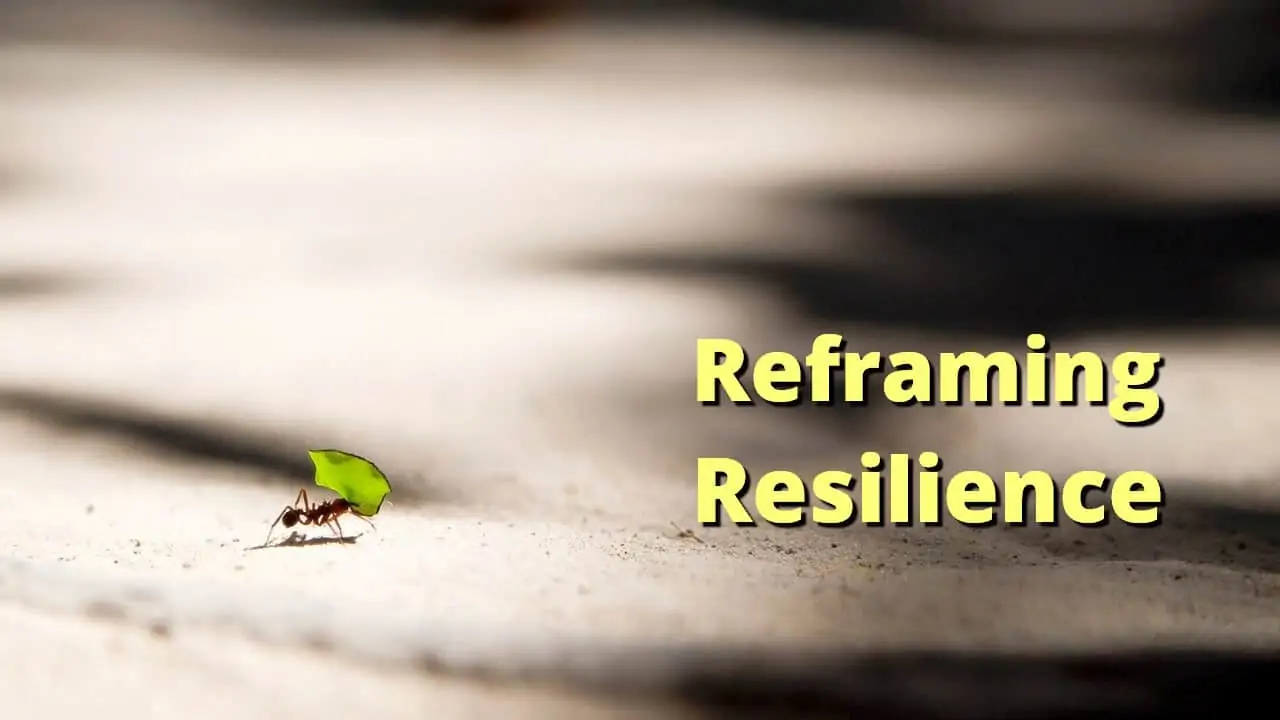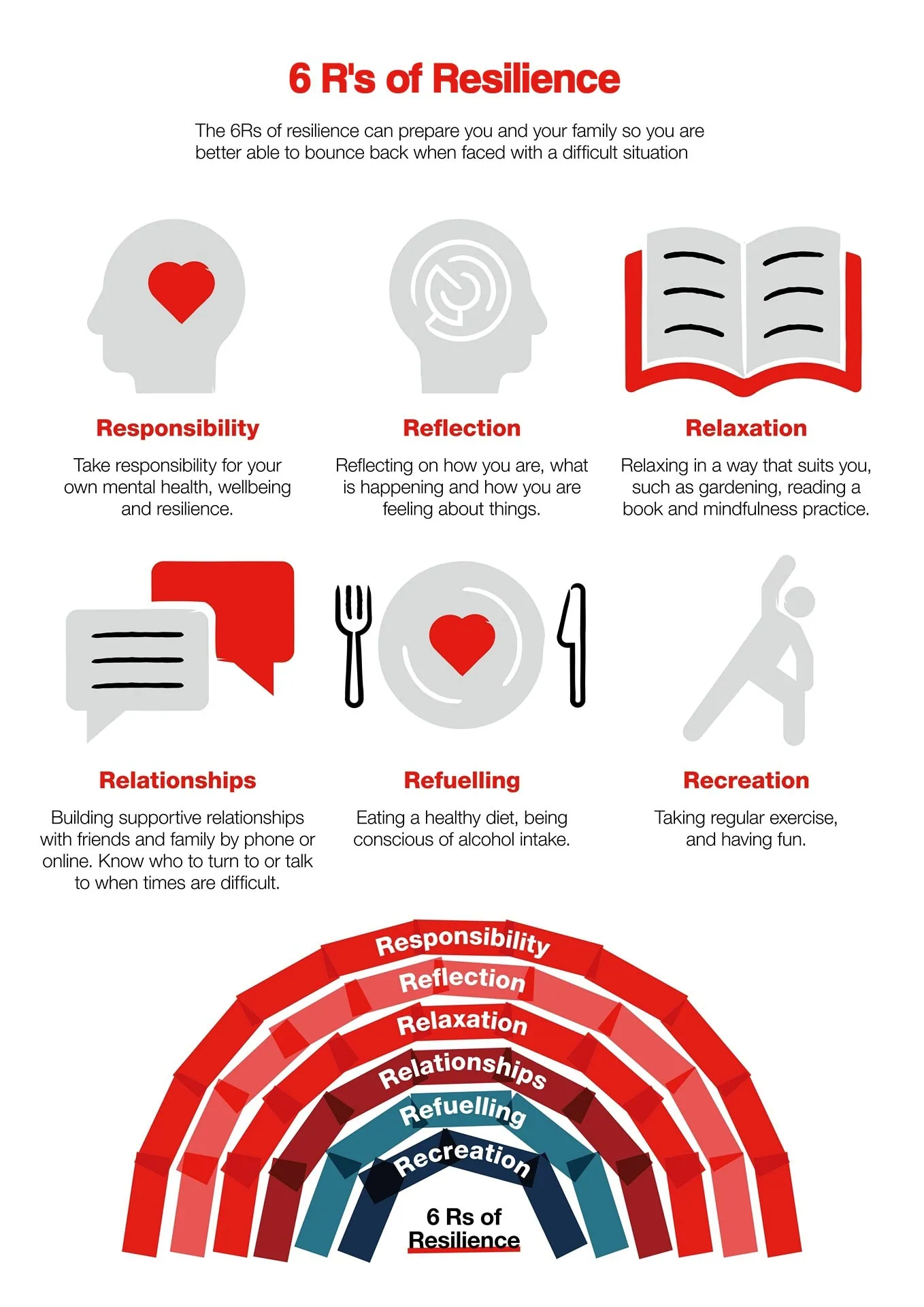Today's Tuesday • 9 mins read
Resilience is more than optimism. Resilient people don’t wallow in self-pity or go it alone, but instead, draw on their strengths and tap into their support systems.
Is the glass half-empty or half-full? The optimist will always say it’s a half-full glass.
Seeing everything with an optimist’s eyes can make you avoid facing the negative parts of life. But dealing with life’s challenges is necessary for a fulfilling life. It is called resilience.
Resilience teaches us to feel sad, helpless, or angry before planning a response to an adverse situation.
Let’s find out more about why resilience is more than having an optimistic outlook on our problems.
What Is Resilience?
Resilience is our ability to keep going through tough times, survive hardships, and recover and grow from suffering. Being resilient is not staying unaffected by difficult times. Rather, it means working through emotional pain and mental anguish to regain normalcy and post-traumatic growth.
The Resilient vs. The Optimist
Having a glass-half-full attitude can make you too positive, where you ignore negative emotions and act like everything is fine.
Optimism is a good outlook when life presents challenges, but only seeing and expecting the good can make them avoid considering negative outcomes.

The perennial optimist, when their idealist beliefs fail in the real world, can get paralyzed into inaction. Their escapist approach often creates more toxic positivity.
On the other hand, a resilient approach can help you learn how to bounce back through action rather than freeze or react from fear and uncertainty.
Resilient people plan for failures. Instead of falling into despair, avoiding future challenges, or turning to unhealthy coping mechanisms, resilient people address problems head-on.
Resilient people don’t wallow in self-pity or go it alone. Instead, they always make it a point to draw on their strengths and tap into their social support to work through and overcome their obstacles.
In many cases, resilient people emerge even stronger than they were before the traumatic event. Thus, resilience is more important than optimism and positivity, in more ways than one.
Reframing Resilience
Many believe resilience is a fixed character trait, something one is born with and destined to depend upon. They think resilient people can confront any challenge because they have elasticity and know they can always bounce back to normal.
Others believe the word is synonymous with grit, tenacity, or determination, and that people who possess resilience are uniquely inspiring, impressive, and even superhuman.
However, resilience is surprisingly ubiquitous, not just as a concept, but as an ability. Indeed, researchers assure us that all of us possess resilience in small or large quantities.

Resilience is a universal capacity.
Over the last few decades of resilience study, one astonishing finding has repeatedly emerged: most children and teens, even those from very stressed households and poor communities, eventually manage to make decent lives for themselves.
Even in the worst-case scenario, when children face multiple and persistent risks, half of them overcome adversity and attain positive developmental outcomes (Rutter, 1987, 2000).
More importantly, the researchers tell us resilience is a learnable skill, and those with low resilience can learn how to develop it.
Do you succumb to, or surmount, life’s many hardships? If the first, then here are some ways to reframe your resilience:
1. Living Through Adversity and Trauma
Despite years of promising resilience research, widespread myths about early adversity persist. Whether you’re resilient or not largely depends on how you respond to how your life unfolds.
If you never experience any adversity, you’ll likely never develop resilience. It’s only when you’re faced with obstacles, stress, anxiety, and environmental challenges, that you discover how resilient you can be, and who you are.
Adversity and trauma are integral to finding and developing resilience and flexibility.
Adversity and trauma come in various guises. Some may be the result of low economic status, sexual orientation, ethnicity, or challenging home conditions.
Often, such environmental threats are chronic and can even make you more susceptible to developing post-traumatic stress disorder.
Others are acute. Maybe you were a victim of rape or neglect as a child, or perhaps you witnessed abuse within the home.
These experiences are short-term, high-intensity stressors that will shape your future, for better or worse. It all depends on how you perceive them.
Adversity and potentially traumatic events do not have predictive power over one’s life outcome, in and of themselves. Ultimately, it’s how you frame and respond to these chronic and acute stressors that shape your future.
2. Maintaining The Internal Locus of Control
What determines your reaction to environmental threats and stressors? Why do some people see the glass half empty while others see it half-full?
Developmental psychologist Emmy Werner discovered that several elements determine these outcomes, the most important of which are psychological.
In her studies, young children she labeled resilient tended to meet the world on their own terms. They were naturally independent and autonomous and viewed challenges as opportunities, so they’d frequently seek new experiences.
Even kids who encountered poverty, maternal stress in utero, family problems, and other hardships tended to use whatever skills they had to achieve success and happiness.
Perhaps most notably, she discovered that these kids had an internal locus of control.
They believed that they — not their circumstances — affected their achievements. They saw themselves as the orchestrators of their own fates, so they took life by the reins and made the best of their situations.
3. Trusting For An Element of Luck
Werner also found that a fair bit of luck can help people adopt a more resilient approach to life.
In the case of the resilient kids, some had fortuitously found people to bond with — teachers, caregivers, and parents. These mentor-like figures offered support and guidance that encouraged these children to keep learning and growing in the face of adversity.
Others weren’t so lucky.
In her study, Werner observed many resilient kids experience multiple strong stressors at vulnerable times, and their resilience disintegrated.
Eventually, they reached a breaking point, and no amount of luck or internal locus of control could save them from succumbing to hardships.
4. Practicing Resilience As A Skill
On the flip side, some people who weren’t resilient when they were children exhibited characteristics of resilience as adults.
These research participants had somehow learned the required skills, proving that it is, in fact, possible to develop this ability and overcome adversity in the future.
This may explain why some are better than others at handling adversity.
How does one learn resilience? First, by switching their perception.
Changing perspective also applies to shifting the locus of control. Switching the locus from external (like seeing things as difficult circumstances) to internal (like reshaping mental strength and re-strategizing) helps reduce stress and boost work performance.
Instead of viewing your past hardships as trauma that you can’t let go of, choose to see them as times when you were put to the test. Rethink them as opportunities for personal growth and self-exploration.
You can also develop a more resilient mindset through emotional regulation. Emotion regulation, as is well known, plays a central role in mood and disruptive problems in children.
If your initial response is mostly instinctive or negative, then practice reframing the challenging stimuli in a more calm and positive light.
With practice, you can train yourself to respond to environmental stressors after engaging your higher thinking.
It helps you evaluate your progress and momentum realistically, which is far superior to a reactive, albeit positive, bravado.
5. Imagining Bad Times Before They Happen
Rather than avoiding them, as the glass-half-full approach suggests, developing resilience as a skill requires facing troubles and hardships.
The way you handle your negative emotions in response to adversity determines your future resilience.
However, if you want to prepare yourself for the more distressing periods of life—the ones you don’t want to face at all—you can employ what the Stoics called Premeditatio Malorum (“premeditation of evils”).
It involves negative thinking and a “what if a negative outcome happens” approach to life. It makes you consider the worst possible outcome and anticipate the downturns.
While it doesn’t actually make things easier, it can help you face them with more courage and an internal locus.
For instance, if you meditate on losing the things you cherish most, you’ll have already acquainted yourself with the accompanying feelings of despair and grief if such misfortune does befall you.
Won’t the visualizing of failures and other evils breed in you a dark pessimism? No, not necessarily. While it’s common for some cultures to assume this outcome, others believe otherwise.
Tragedies marred the golden days of Ancient Greece and Rome, when some of the best philosophers walked this Earth. Nonetheless, they were also times infused with productivity, artistic creativity, and resilience in life.
Following in their footsteps, it seems that becoming more aware of the darker side of things might lead to a greater appreciation for what you have. More importantly, the practice helps you strengthen your resilience, allowing you to see a future of possibilities.
Final Words
Thanks to decades of research, we can now understand how anyone can come to possess it or lose it, and why being resilient is more crucial than being positive and optimistic.
It’s time we embrace the knowledge and show others how to build resilience. The first step is to see things as they truly are. Then start putting to practice the principles of resilience-building.
You are the gatekeeper of your own destiny, the orchestrator of your fate. Will you crumble under pressure or use it to turn coal into diamonds?
Trouble and calamity will certainly befall you. Such is life. However, if you’re resilient, you can overcome those hard times. More importantly, you can bounce back even stronger than you were before and become a testament to what resilience can do.
• • •
We often boast we know how to deal with criticism. However, when we confront a harsh critique, we react in ways that we claimed we would never do. Learn how to handle criticism like a pro?
• • •
Author Bio: Ginger Abbot is a learning, education, and career writer, as well as the founder of Classrooms. Read more of her work on her website and follow her on X (formerly known as Twitter). Edited, reviewed, and revised by Sandip Roy.
√ If you liked it, please spread the word.